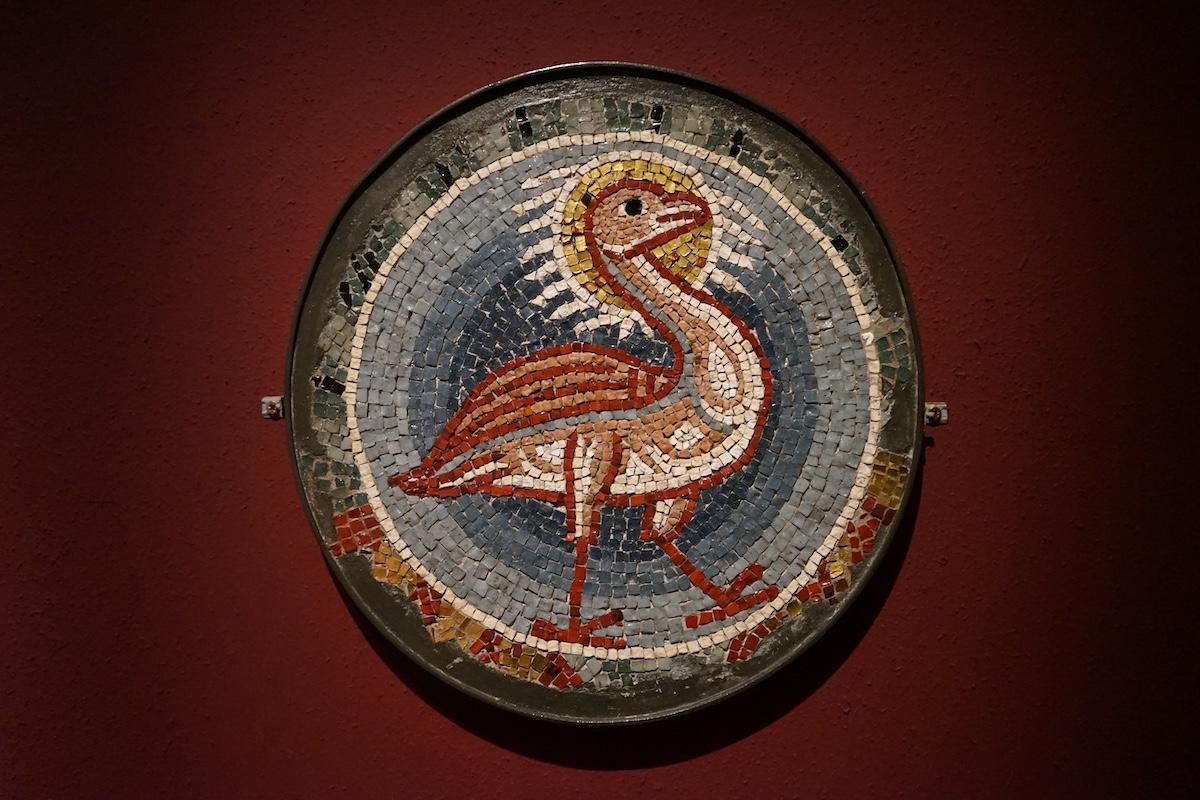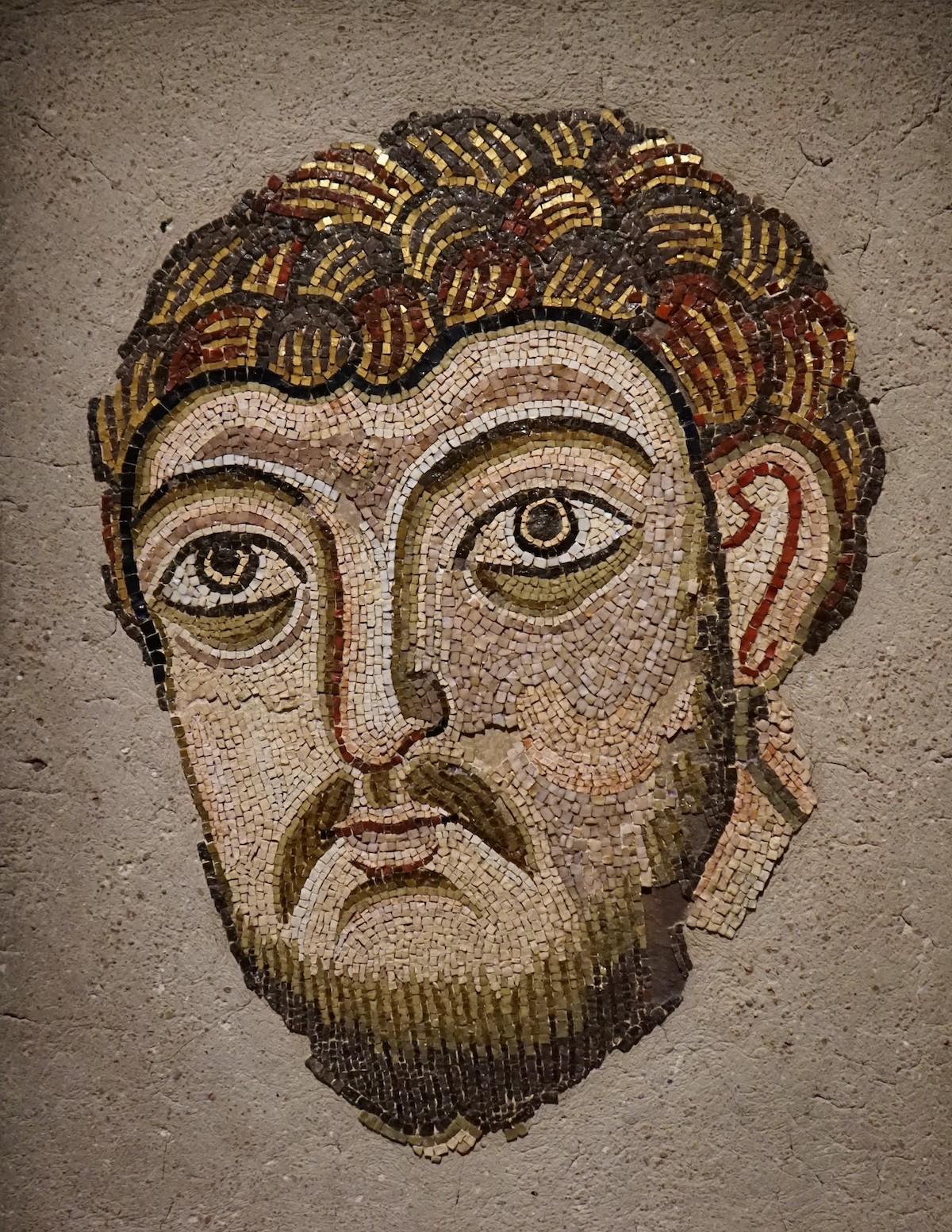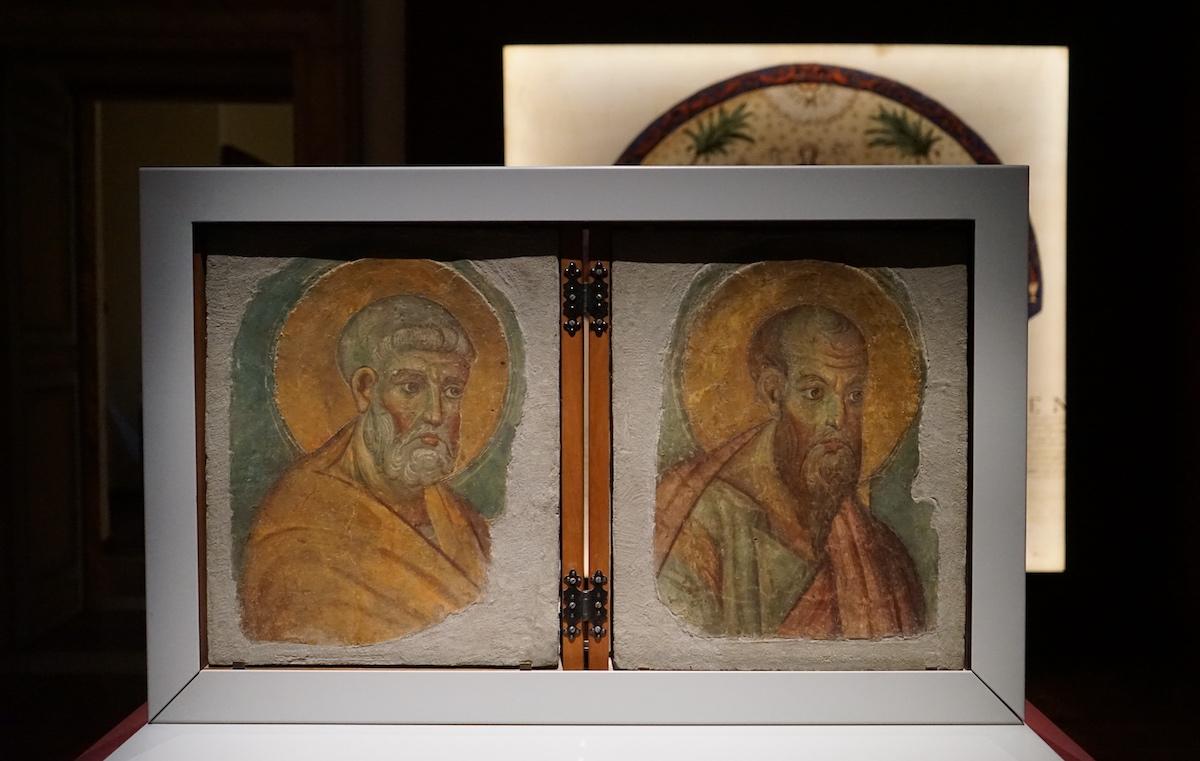Evidence of this in the exhibition is from the mosaics and frescos that were saved from ‘Old’ St Peter’s Basilica. Built by the emperor Constantine in the early 4th century AD, St Peter’s Basilica was enhanced in subsequent centuries with new cycles of frescos and mosaics. Then, in 1506 Pope Julius II embarked on a scheme to completely replace the original basilica with a new, larger, and architectural innovative structure.
Elements of the original St Peter’s were repurposed in the new Basilica or recycled in other buildings around the city. The decoration of the earlier church is known only through drawings and a few fragments of mosaics and frescos from the apse, façade, and portico, which were preserved when it was pulled down. Now, they are on display in the exhibition.



























